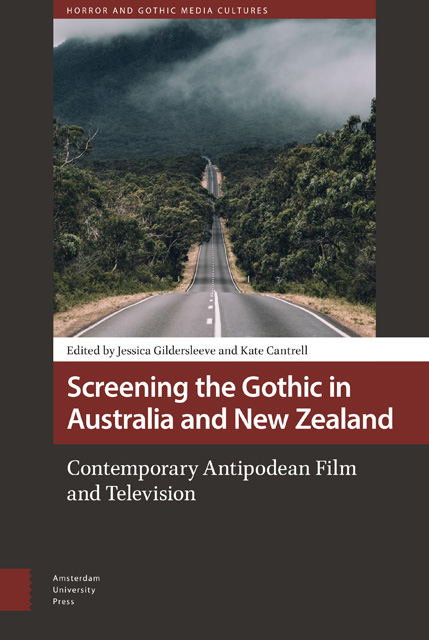12 - From ‘Fixer’ to ‘Freak’: Disabling the Ambitious (Mad)Woman in Wentworth
Published online by Cambridge University Press: 24 November 2022
Summary
Abstract
In 2013, Foxtel (SoHo) debuted Wentworth, the women-in-prison television drama and remake of Prisoner: Cell Block H (1979–1986). Season Two resurrects Joan ‘The Freak’ Ferguson, the prison's new Governor. While the disturbing and the disturbed are tropes common in both gothic texts and prison dramas, something more sinister lurks within Wentworth as viewers witness Ferguson's personal, psychological, and professional disintegration. Positioned within a feminist disability studies framework, this analysis reveals how Wentworth deliberately frames Ferguson as a revenge-seeking madwoman, conflating symptoms of psychiatric disorders that ultimately dehumanize her. By adopting the banal archetype of the madwoman as villain and leveraging disability as spectacle, Wentworth perpetuates patriarchal and ableist misconceptions about women in power and people with psychiatric disabilities.
Keywords: madwoman; madness; prison drama; psychiatric disorder; feminist disability studies; spectacle
In 2013, Foxtel (SoHo) debuted the women-in-prison drama, Wentworth, a remake of the soap opera Prisoner: Cell Block H (1979–1986). With its ominous prison landscape, terrifying characters, melodramatic suspense, and frequent themes of powerlessness, Wentworth exemplifies contemporary urban-industrial female gothic realism. Suspense-inducing plots by a host of flawed anti-heroines and grotesque villains help the series achieve the unpredictable surprises that keep its transnational viewers watching. Perhaps no other character in Wentworth epitomizes the grotesque villain like Governor Joan Ferguson (Pamela Rabe). While Ferguson's character begins as ‘the fixer’, a formidable leader installed to overhaul the prison, she steadily devolves into ‘the freak’, exposing a flawed ethical code driven by revenge. Seasons two and three follow Ferguson's tumultuous tenure as Governor until her gradual psychological unravelling results in her imprisonment. Positioned within feminist disability studies, this analysis reveals how Wentworth deliberately frames Ferguson as the ambitious madwoman, conflating symptoms of psychiatric disorders that ultimately dehumanize her. By adopting the banal archetype of the gothic madwoman as villain and leveraging disability as spectacle, Wentworth perpetuates sexist and ableist misconceptions about women in power.
Wentworth as Urban-Industrial Female Gothic Realism
Wentworth reconstructs urban-industrial female gothic realism for contemporary audiences by trapping morally flawed women with sordid histories and violent tendencies inside the maze of Wentworth Correctional Centre.
- Type
- Chapter
- Information
- Screening the Gothic in Australia and New ZealandContemporary Antipodean Film and Television, pp. 229 - 250Publisher: Amsterdam University PressPrint publication year: 2022



